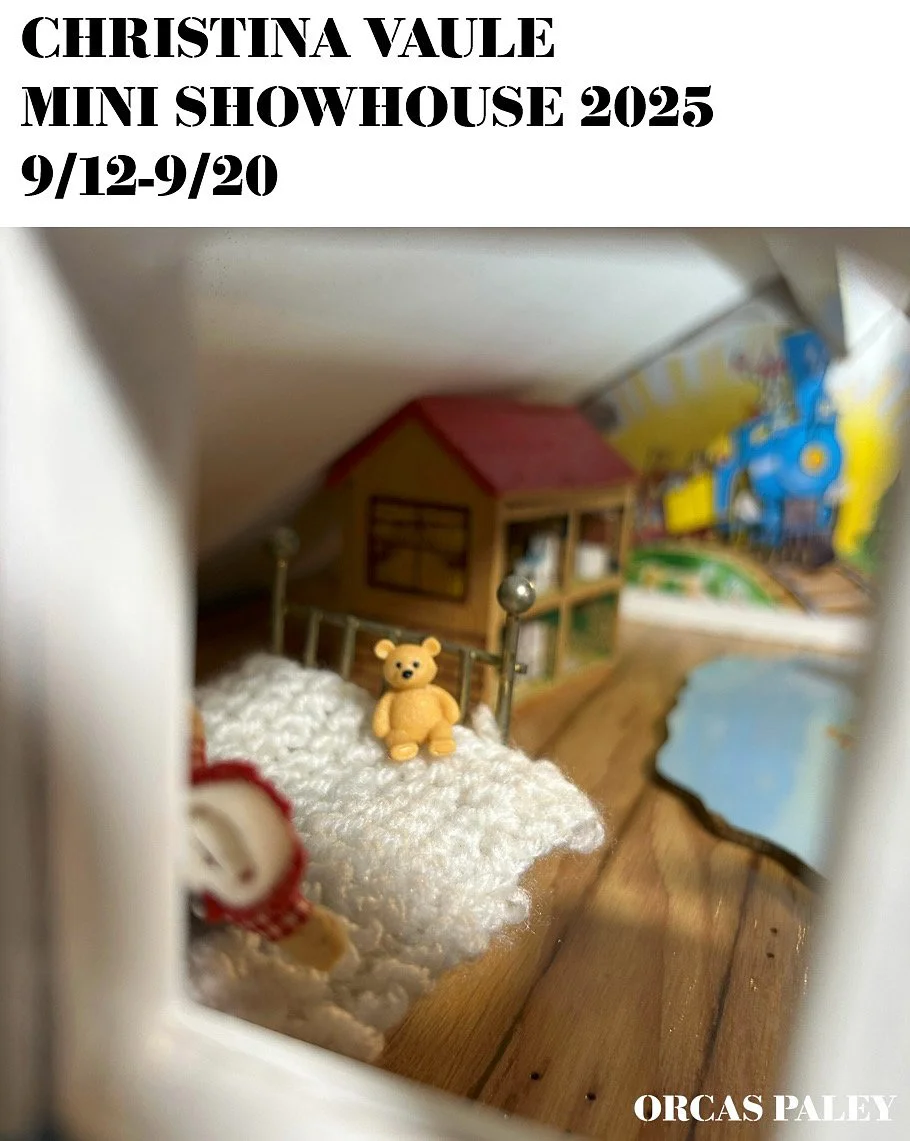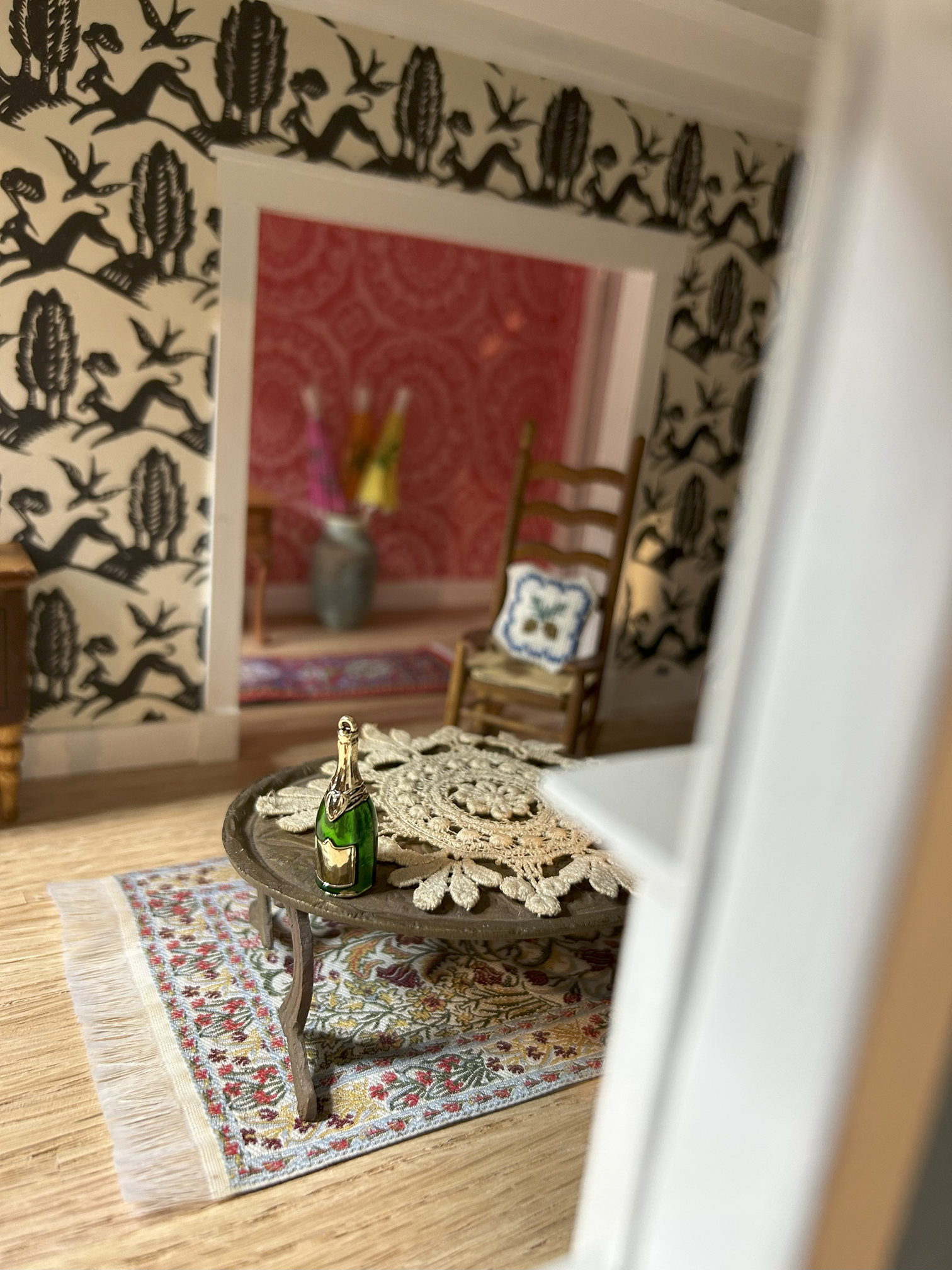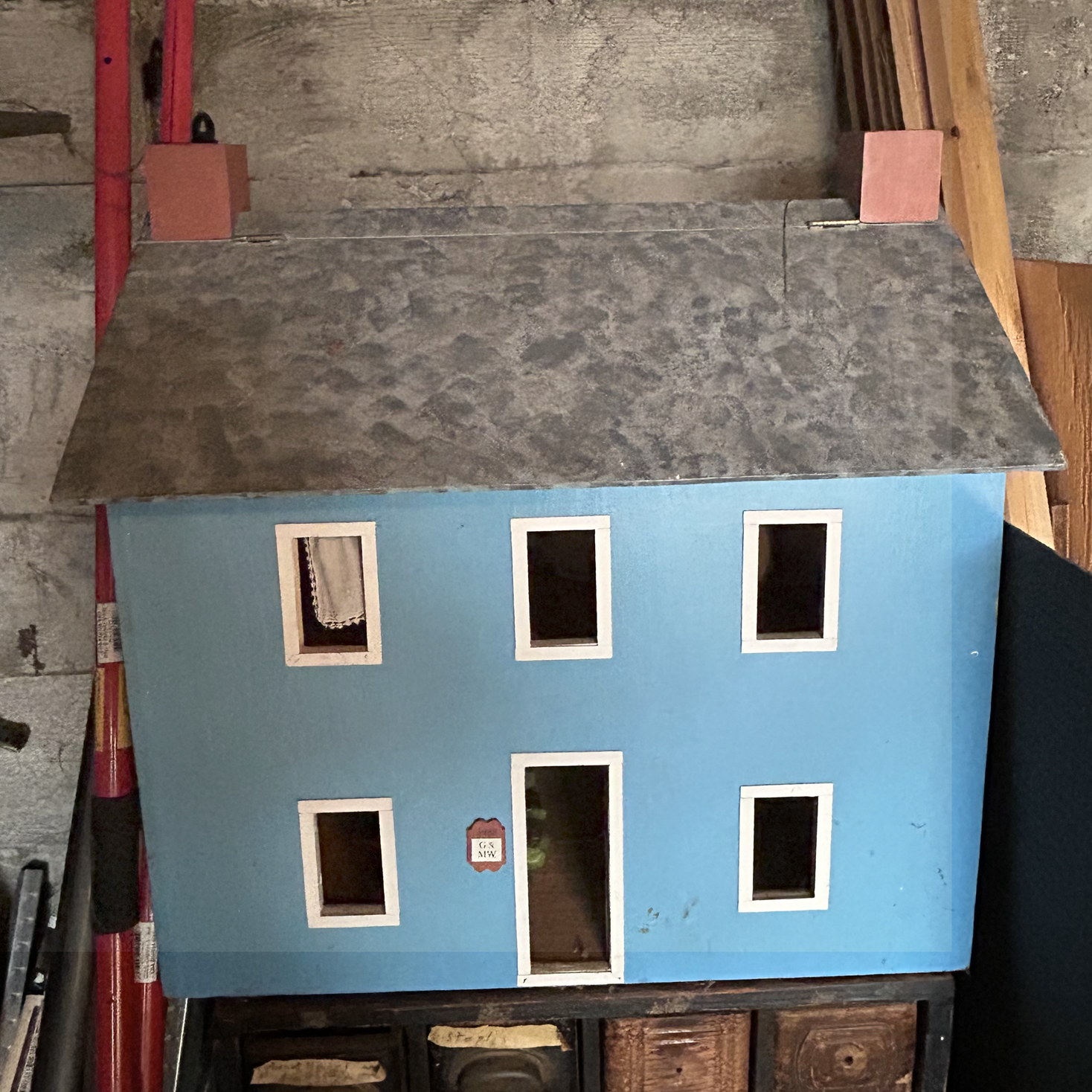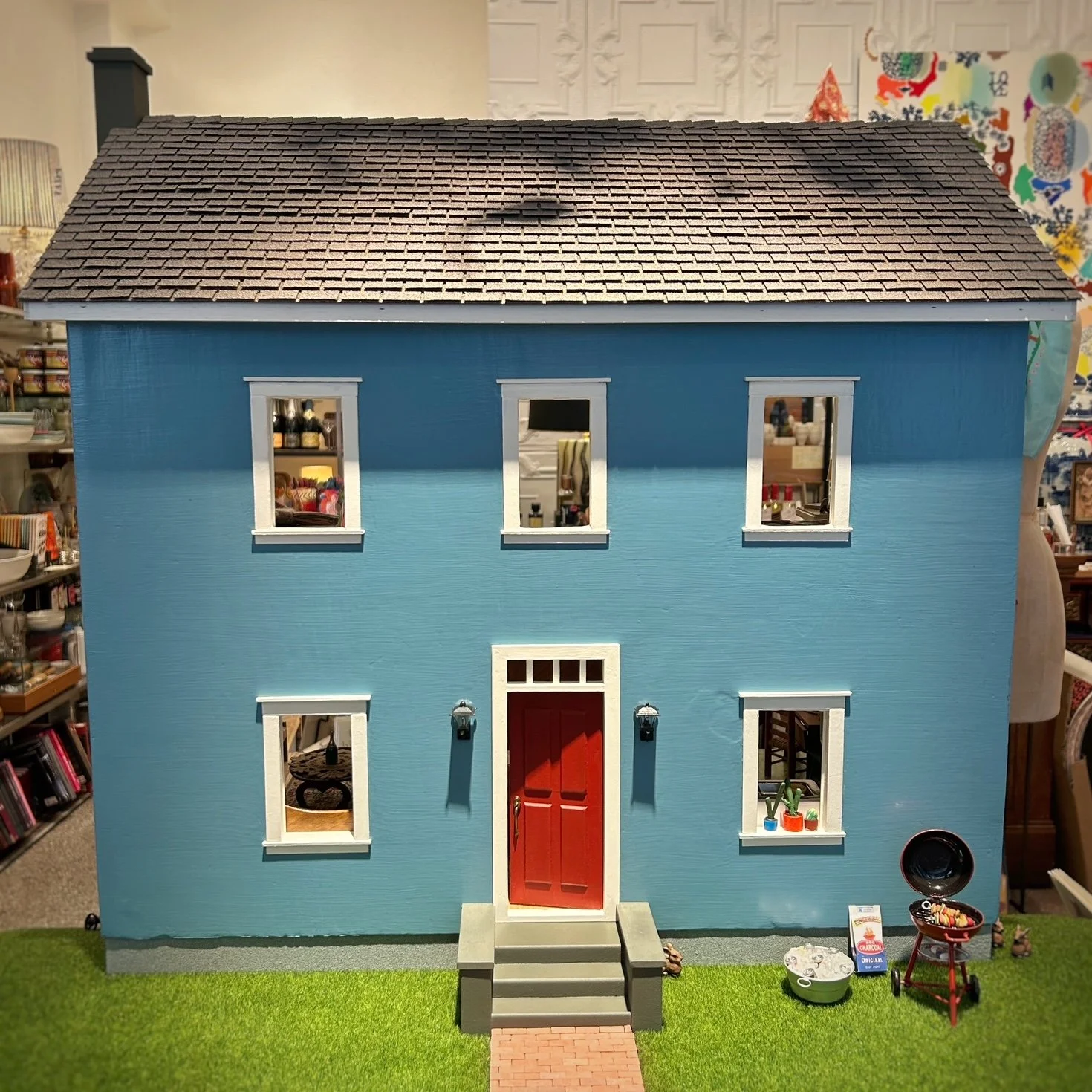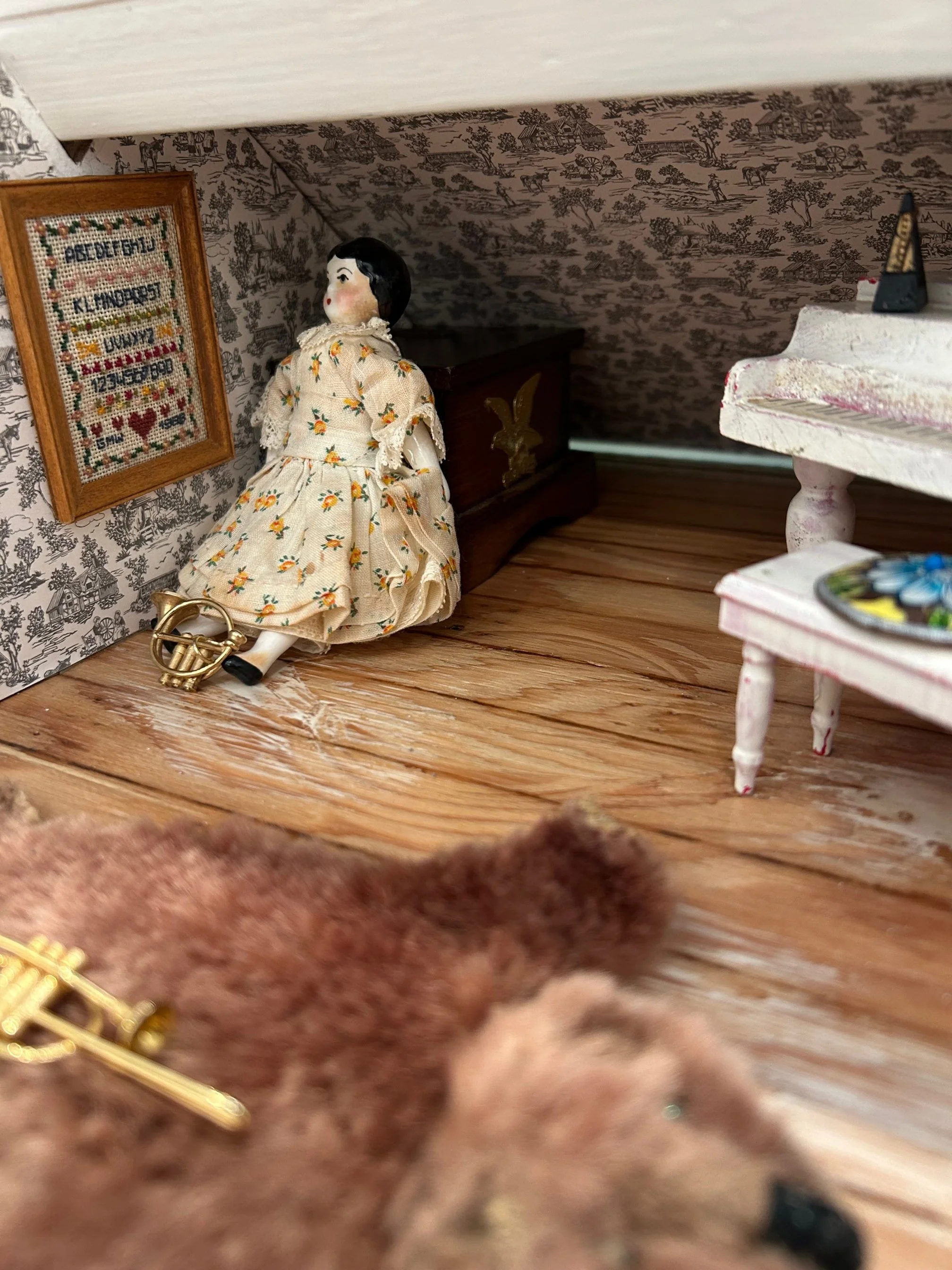Why do you think people are so drawn to and fascinated by miniature scale? Are tiny things - is tiny-ness - interesting by nature, or is it the rendering of something “life-sized” into miniature that makes it intriguing?
I think miniatures are appealing for a number of reasons. A big one is nostalgia. For those of us who had dollhouses when we were young, miniature-scaled objects can bring up memories of things long forgotten.
There’s also the fantasy element: a very basic sense of “you can make it anything you want”. Maybe you can’t have your own bookshop, but you can make a mini one.
With this project I’d say I indulged in some things that I would be too hesitant (or limited by cost) to try. The pink and white striped couch in the dollhouse living room is my dream couch. I’d also love to have wallpaper like the wallpapers (Cambridge Imprint paper from Orcas Paley!) in the dollhouse in my real house, but I’m too chicken to commit to such a bold look.
In addition, many? several? cultures have folklore traditions centering on little people, creatures, and/or worlds, so I think the fascination with miniatures is woven into our psyches somehow.
Cambridge Imprint “Ditchling Hound” paper in the living room
This is a dollhouse in which pretty much every detail has a story behind it. Can you highlight just a few furnishings and/or special touches that are especially meaningful to you?
I love the histories and stories behind everything in the house.
If I have to pick a few favorites, I’d say the David Lynch image and quote (“The day you catch an idea you fall in love with, even a small one, is a beautiful day”) on the mantel in the living room is for sure in the top few. It holds special meaning because when Lynch died, there were many quotes making the rounds and that one really spoke to me. It is what pushed me to finally make this project happen.
My friend Betsy sent a photo of the two of us when we were 14 or 15 and it sits on a dressing table in the bedroom. She and I met in first grade and spent many hours playing with our dollhouses. I love that our younger selves have a presence in this dollhouse.
The dressing table on the back wall in the bedroom (the one with the picture of me and my friend on it) belonged to my grandmother and was in her dollhouse when she was young, so that’s pretty special to me.
So many things that people contributed are perfect touches in the house. The candle sconces in the hallway, which were originally in a friend’s dollhouse in New York, remind me of the light scones in the front hall of the house I grew up in. Another item that I’m particularly fond of is the vacuum in the rec room—it came from a friend who grew up in Montana.
The dollhouse before refurbishment and basement / lawn addition
The renovated house, front elevation
You mentioned being compelled by (life-sized) showhouses as a kid. What do you think was the draw?
I think the showhouses offered me a freedom. I was 9 or 10, give or take, and I could just wander around in a big empty house.
You brought up the fact that no one lives in showhouses. I never thought about that before, but it makes me think that in a way the showhouse was a big dollhouse and I was this little person running around in it.
I definitely had the feeling that these were not real houses…they were done up in unrealistically fancy ways that offered ideas for how people *could* decorate.
Bunnies placed by Susan Mitchell
Does anybody live in this dollhouse? Was it created for a particular resident persona / personae? Or is that a moot point, given that the dollhouse is inspired by showhouses, which are not occupied by actual residents?
Good question!!! People are really curious about who, if anyone, lives in this dollhouse, or any dollhouse for that matter. There seem to be different camps regarding dollhouse residents. Some folks are adamantly against people (namely, dolls) living in dollhouses. I did have dolls in my dollhouse, as did my best friend.
My brother used to do improv (years ago) and he recently told me of a scene he did where he was a dollhouse salesman. A customer wanted to buy a particular house for his kid, but my brother’s character insisted on knowing what kind of people would be living in the house. He didn’t feel comfortable selling the house without knowing the type of family (or not family?) would live there. Ultimately he refused to sell the house to the customer.
Cambridge Imprint “Pineapple” paper (a Peggy Angus pattern) in the hall
…Inhabitants of this dollhouse didn’t even occur to me until a friend asked about it, wondering if some mini dolls he had would be a good contribution. I said no dolls (or anyone) lived in the house. I think the idea of who lives in the house felt constricting. It would inform the rooms, the furniture, the accessories, and so on. But then I received a very special package in the mail. It was an antique doll from an old friend. The doll had belonged to her great aunt (who is still alive at 102!), and my friend generously offered it as a contribution to the project.
I had a little panic, wondering how to reconcile this lovely gift with my feeling that no one in particular lives in the house. Then it hit me: She’s a ghost. Perfect. She lived in the house many years ago, and is a friendly ghost. It was a way to include the doll in the project that let me work around the constraints I felt “residents” would put on the house and the project.
The friendly ghost-in-residence

